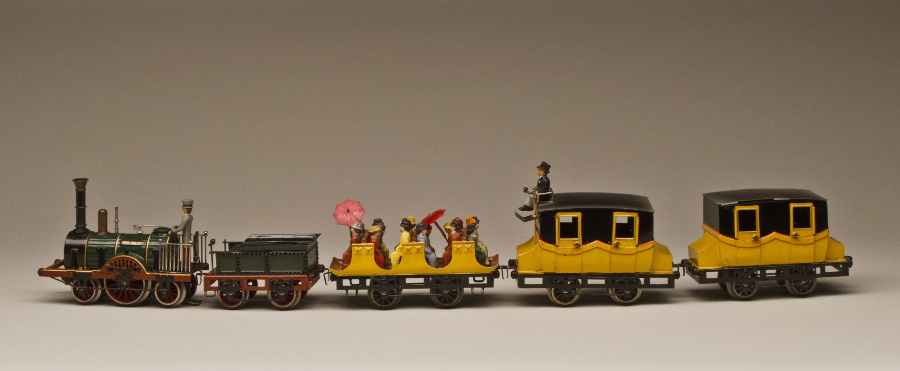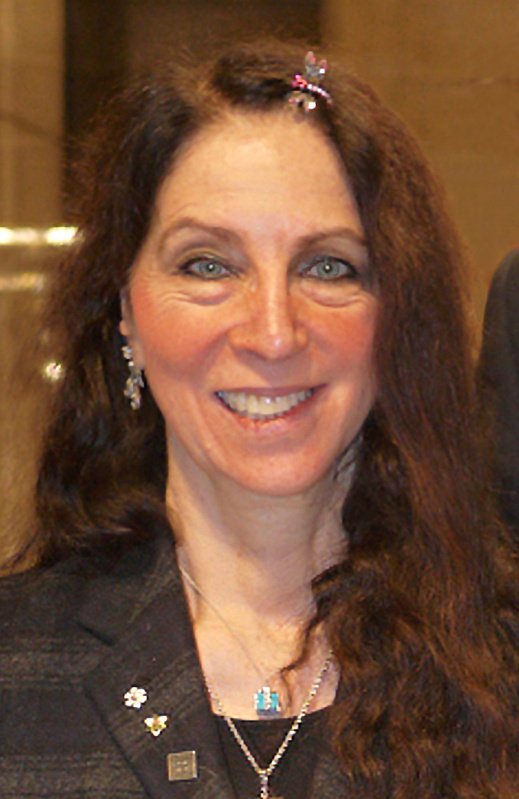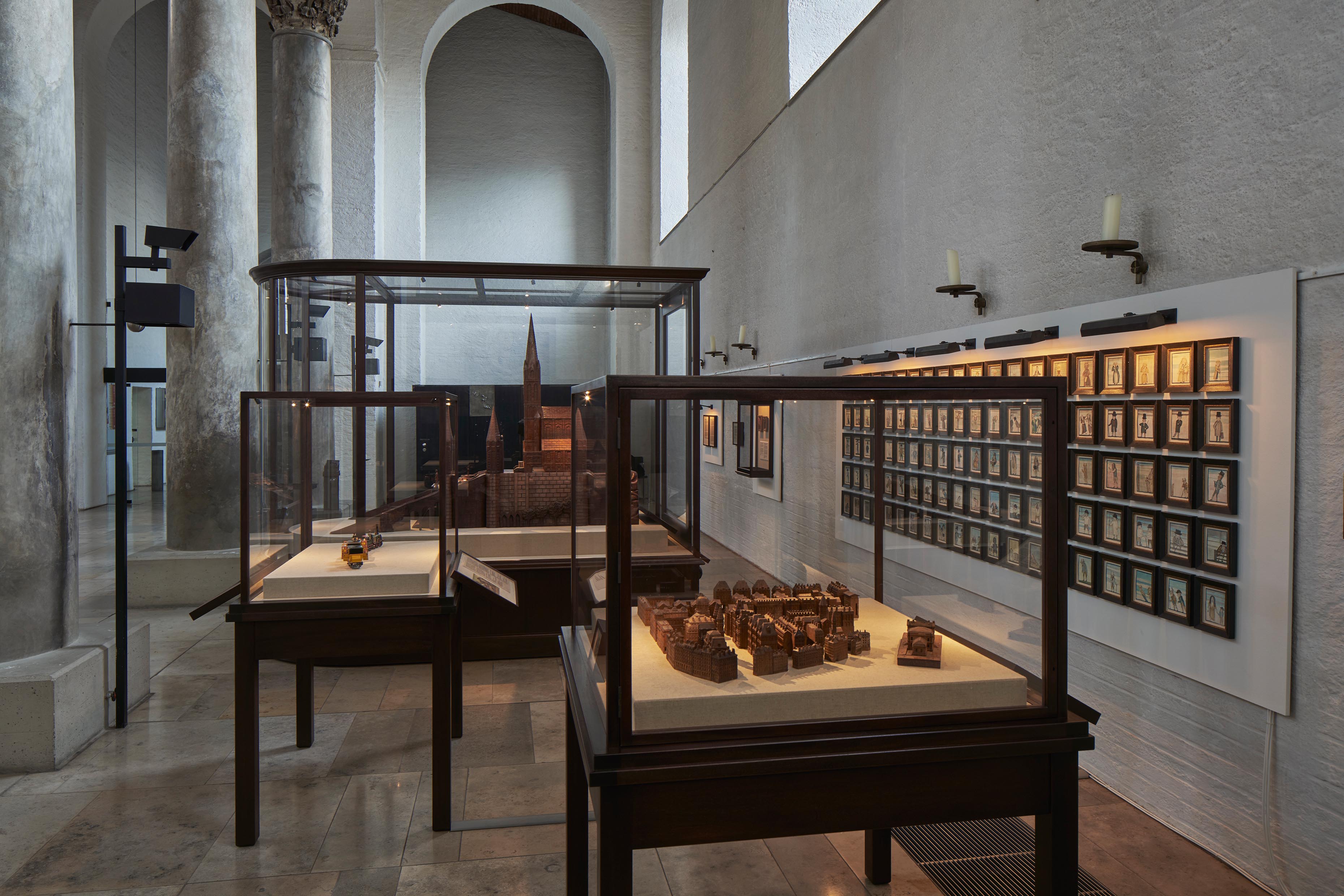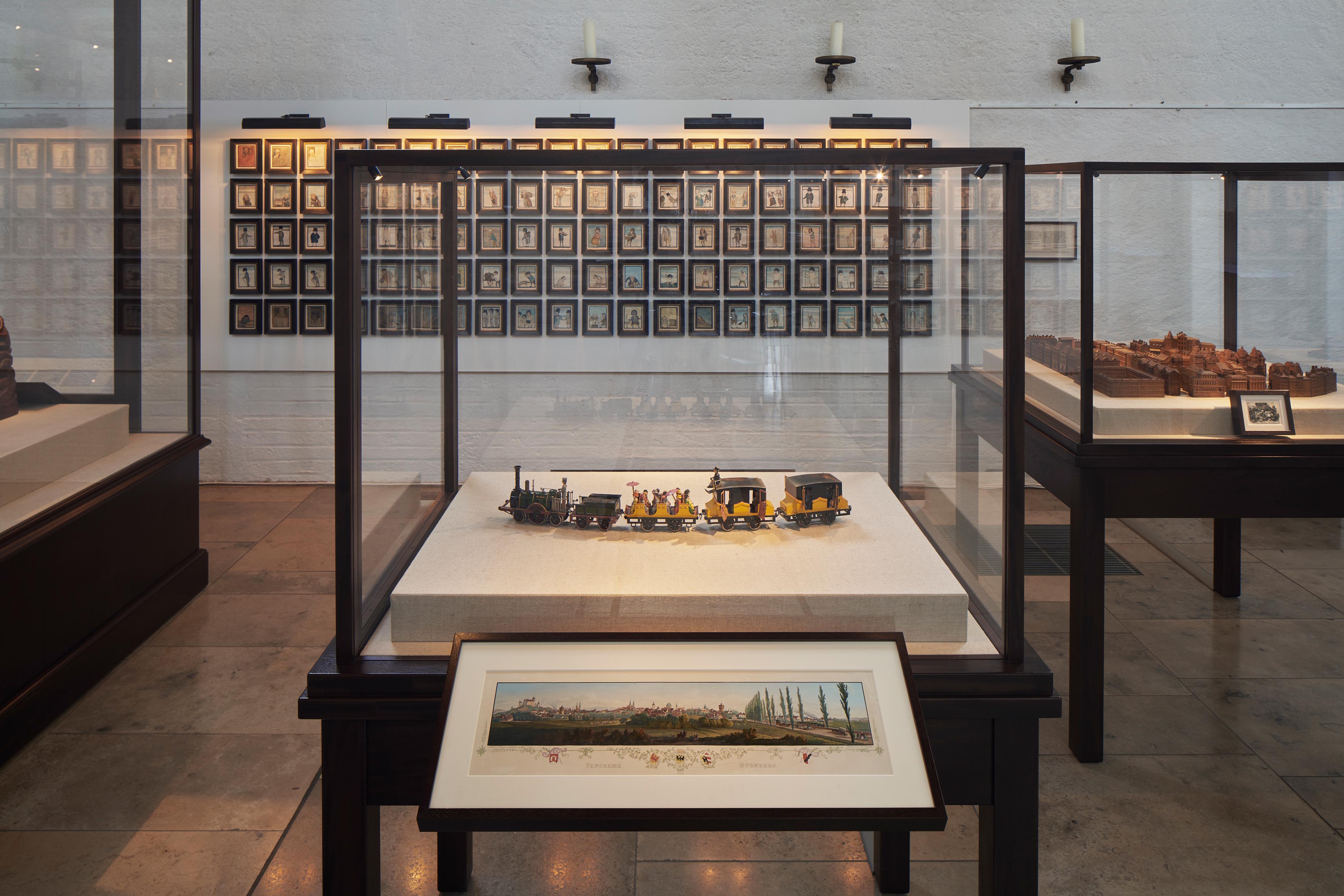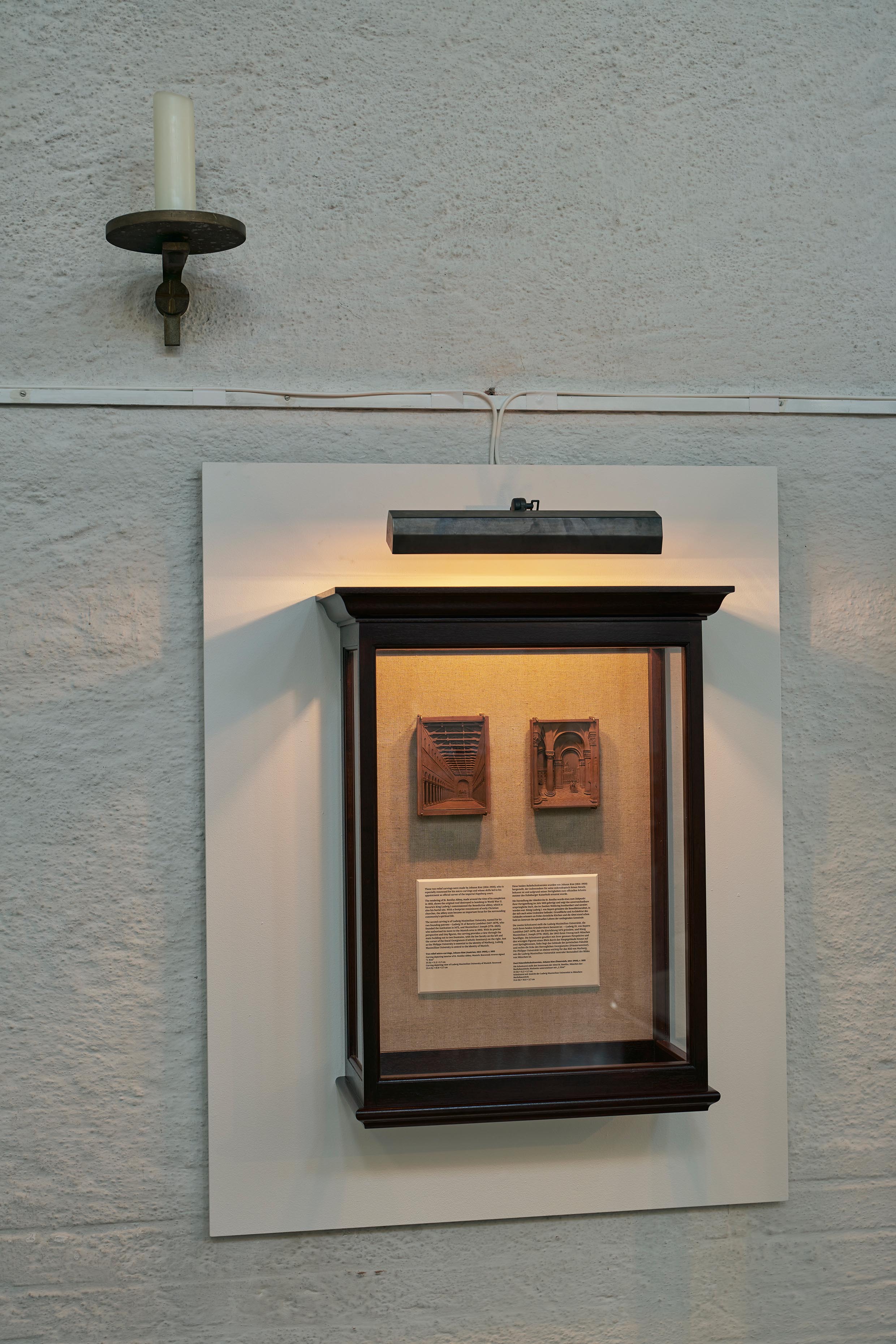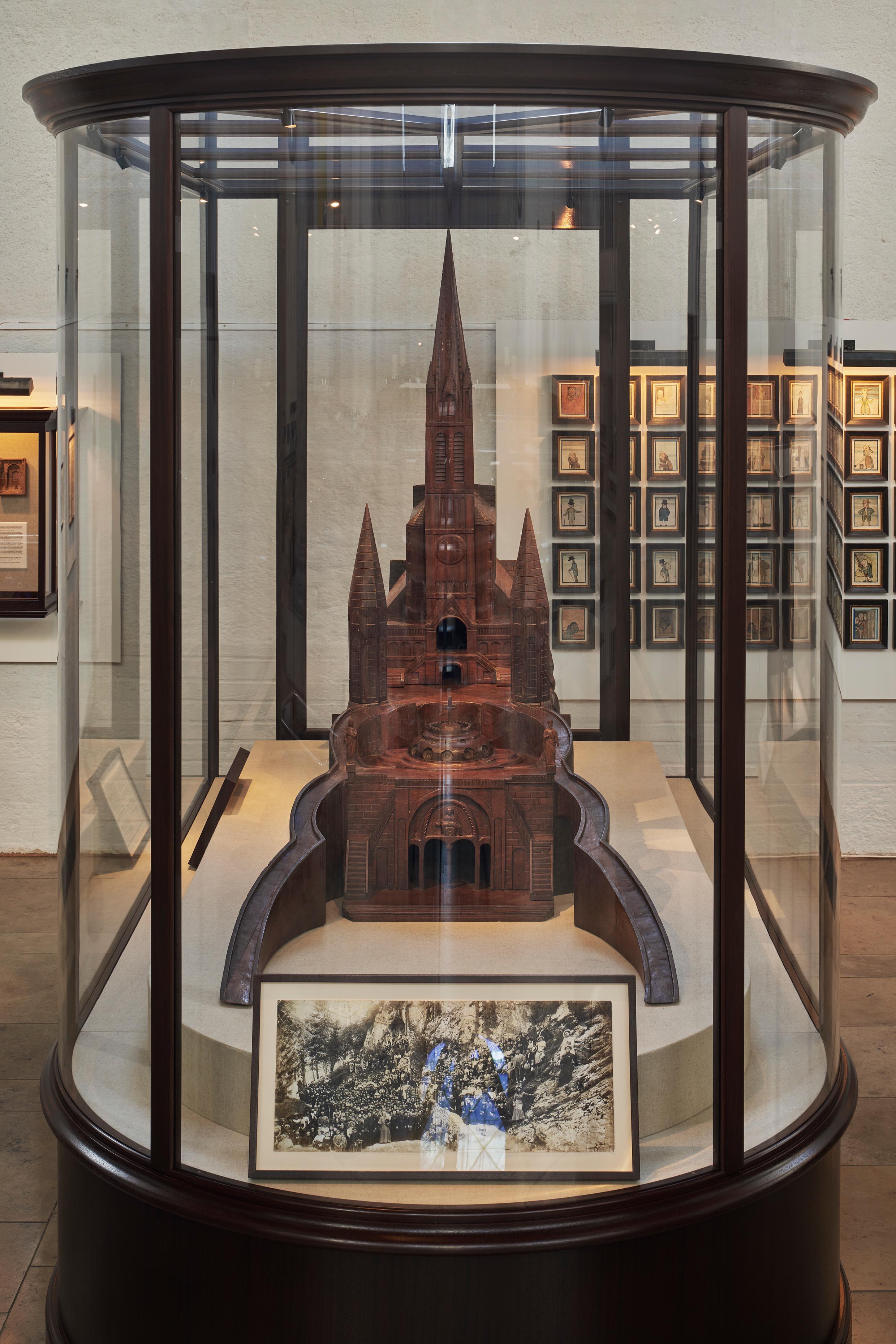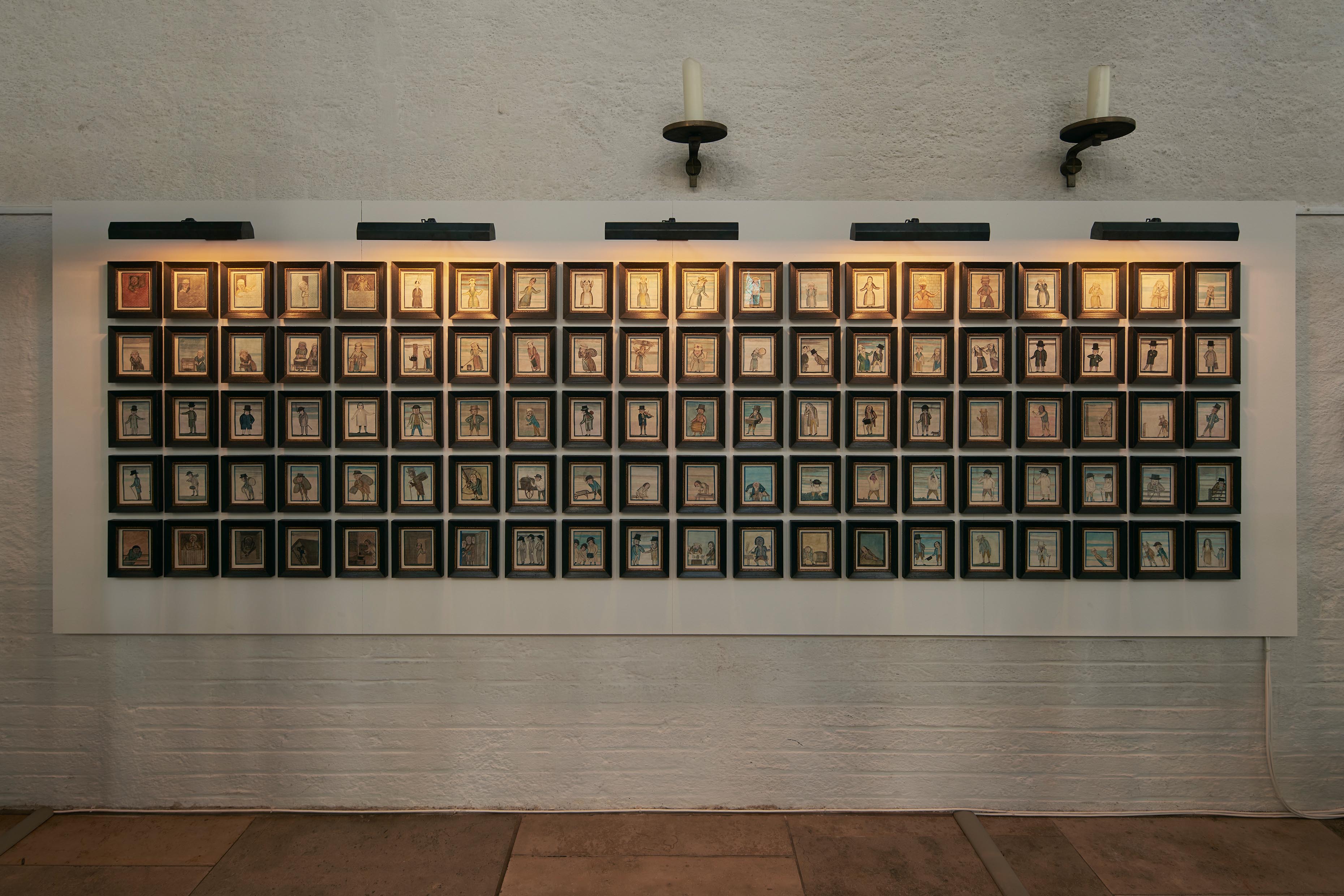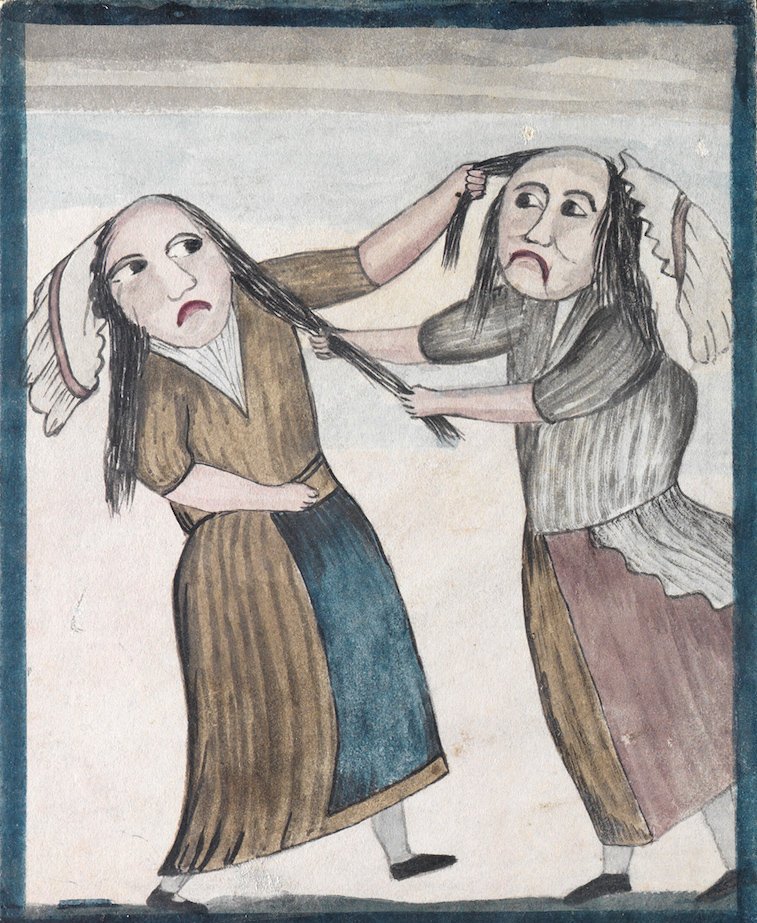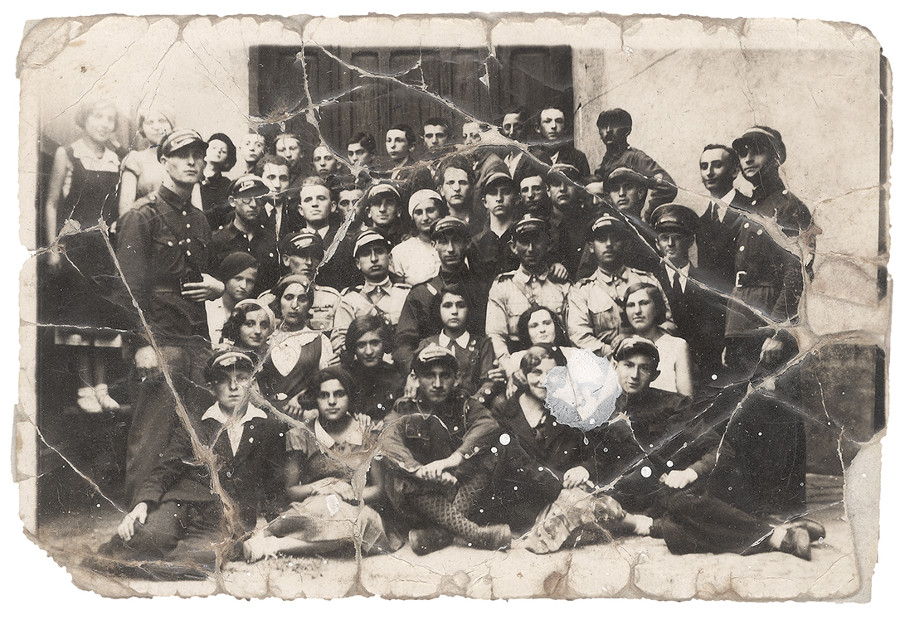The Steeple and The People, 2018
Installation, dimensions variable
Ydessa Hendeles’ newly created work The Steeple and The People is a site-specific installation located in St. Boniface’s Abbey. Hendeles arranges historical objects, works of art, and personal artifacts in order to compose an ambiguous narrative about the power that different belief systems have to separate or unite people. The Steeple and The People alludes to a British nursery rhyme. The artist patterns her work on the rhyme, creating a spatial intervention that evokes historical events. Hendeles forges a metaphorical link between the cities of Nuremberg and Fürth – represented by a reliquary and a miniature model of a city – using a toy train set from 1935. The train is a reference to Germany’s first steam rail line, the Adler (Eagle), which ran between the two cities and enabled Fürth’s Jewish community to work in Nuremberg, where they were not allowed to live. The Nazis staged large-scale events in Nuremberg, so the city came to be viewed as emblematic of their inhuman ideology. The symbolically charged representations of Fürth in Hendeles’ installation stand for the exclusion and later deportation of Jews. In the fiction crafted by the artist, the history of exclusion and persecution is transformed into a narrative of acceptance and participation, conveyed by watercolors imagining a peaceful coexistence.


